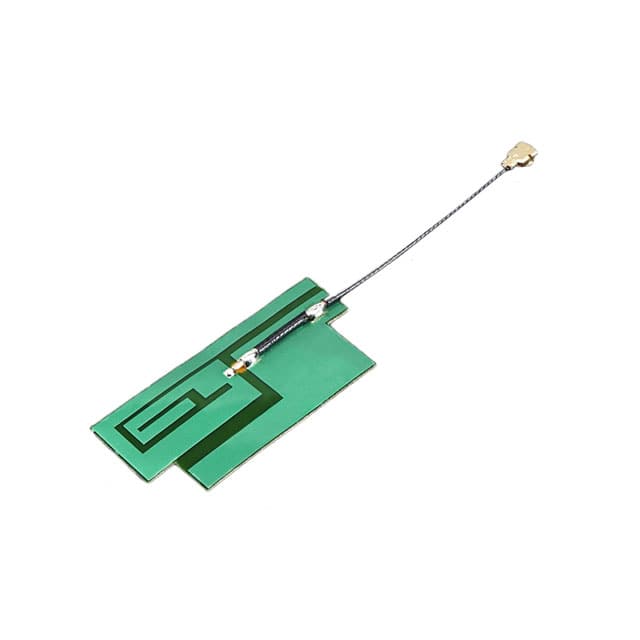
Pololu Corporation
Pololu Corporation is a leading manufacturer of robotics and electronics components, providing a wide range of products to hobbyists, engineers, and businesses. Founded in 2000, the company has grown to become a trusted supplier known for its quality, affordability, and innovation. Pololu's products include motor controllers, sensors, microcontrollers, power supplies, and chassis designed to facilitate the development of robots, drones, and other electronic projects. The company's focus on open-source hardware and software has created a vibrant community of users who share their knowledge and expertise. Pololu's commitment to customer support is evident through their extensive resources, including technical documentation, user forums, and project examples. With a global presence and a team of experienced professionals, Pololu continues to provide cutting-edge solutions that empower individuals and businesses to bring their ideas to life.
RF Antennas
Results:
2
Series
Features
Operating Temperature
Ingress Protection
Contact Type
Voltage - Rated
Accuracy
Feedback Type
Motor Type
Connector Type
Load Force (Dynamic)
Stroke Length
Speed
Construction
Number of Rows
Number of Positions
Termination Style
Color
Approval Agency
Row Spacing
Fastening Type
Mounting Type
Insulation Material
Type
Load Force (Static)
Pitch
Duty Cycle
Contact Termination
Acceleration
Gear Reduction Ratio
Results remaining:2
Applied Filters:
Pololu Corporation
About RF Antennas
RF antennas are crucial components used in the reception and transmission of electromagnetic waves across a broad range of radio frequencies. These antennas are specifically designed to operate within the DC to 18GHz frequency range, making them compatible with various RF families, including Bluetooth, Cellular, General ISM, Navigation, Wi-Fi, and 802.15.4. There is a wide variety of RF antenna types available, each optimized for specific applications and performance characteristics. Some of the commonly used RF antenna types include: Bead Antennas: These compact antennas are often used in RFID applications and offer omnidirectional radiation patterns. Biconical Antennas: Biconical antennas are designed for wideband applications and feature a broad frequency range and omnidirectional radiation patterns. Blade Antennas: Blade antennas are thin, planar antennas that are ideal for portable devices and have a narrow radiation pattern. Ceramic Patch Antennas: These antennas are commonly used in wireless communication systems, such as GPS and cellular devices, and provide high gain with directional radiation patterns. Chip Antennas: Chip antennas are small, surface-mountable antennas that are commonly used in IoT devices and offer compact size and omnidirectional radiation patterns. Coiled Inductor Antennas: These antennas consist of a coil of wire wound around a ferrite or iron core and are often used in AM/FM radios and wireless charging systems. Corner Reflector Antennas: Corner reflector antennas use a corner reflector structure to achieve higher gain and are commonly used in radar and satellite communication systems. Directional Antennas: These antennas focus the radiation pattern in a specific direction, providing higher gain and longer range. Examples include Yagi and dish antennas. Dome Antennas: Dome antennas are aesthetically pleasing and often used in indoor wireless communication systems like Wi-Fi networks. Flat Antennas: These thin, planar antennas are suitable for embedding in devices like laptops and smartphones, offering low profile and omnidirectional radiation patterns. Flex Notch Antennas: Flex notch antennas are flexible antennas used in applications where size and shape constraints exist, such as wearable devices. Helical Antennas: Helical antennas are compact, coil-shaped antennas that offer circular polarization and are commonly used in applications like GPS and wireless communication systems. Horn Antennas: Horn antennas have a flared shape, enabling high directivity and gain, and are often used in microwave applications and radar systems. Log Periodic Antennas: These antennas have a wide frequency range and consistent performance, making them suitable for applications requiring broad bandwidth, such as TV and radio broadcasting. Loop Antennas: Loop antennas are simple and compact, often used in portable devices like AM/FM radios and RFID systems. Module Antennas: These antennas are integrated into RF modules and are commonly used in wireless communication modules and IoT devices. Whip Antennas: Whip antennas consist of a straight, flexible rod and are commonly used in portable radios and wireless communication systems. Yagi Antennas: Yagi antennas are highly directional and offer high gain, making them suitable for long-range communication applications like TV reception and point-to-point links. Puck Antennas: Puck antennas are compact, puck-shaped antennas typically used in GPS devices and wireless communication systems. The selection of the appropriate RF antenna type depends on factors such as the desired frequency range, gain, radiation pattern, and application-specific requirements. These antennas are essential for enabling wireless communication, data transmission, and reception across various industries, including telecommunications, aerospace, defense, automotive, and IoT. In summary, RF antennas are available in a wide range of types, each designed to cater to specific applications and performance characteristics. These antennas enable the reception and transmission of electromagnetic waves in various radio frequency bands, supporting seamless wireless communication and connectivity in numerous industries and technologies.


